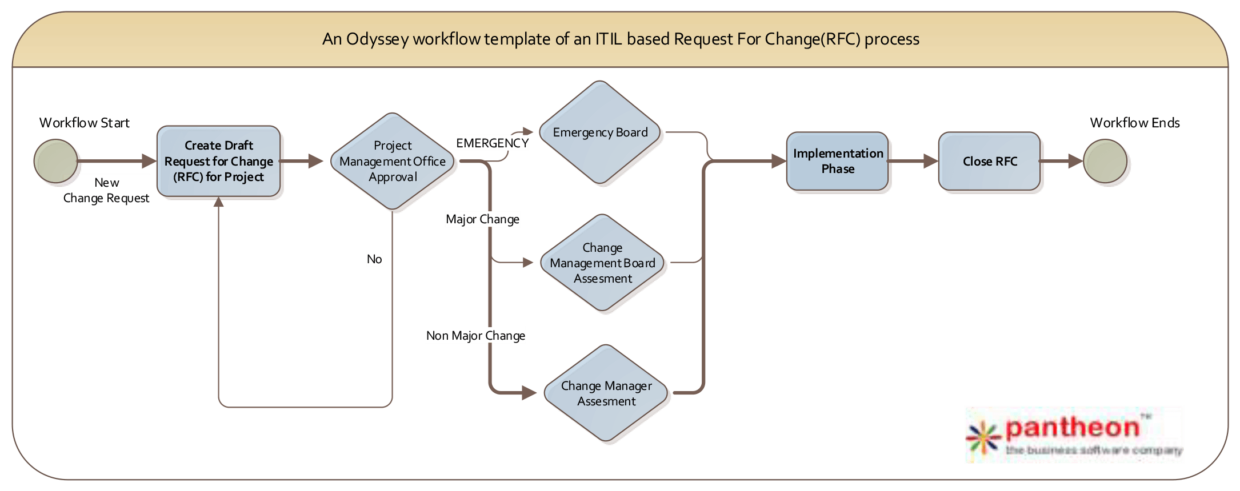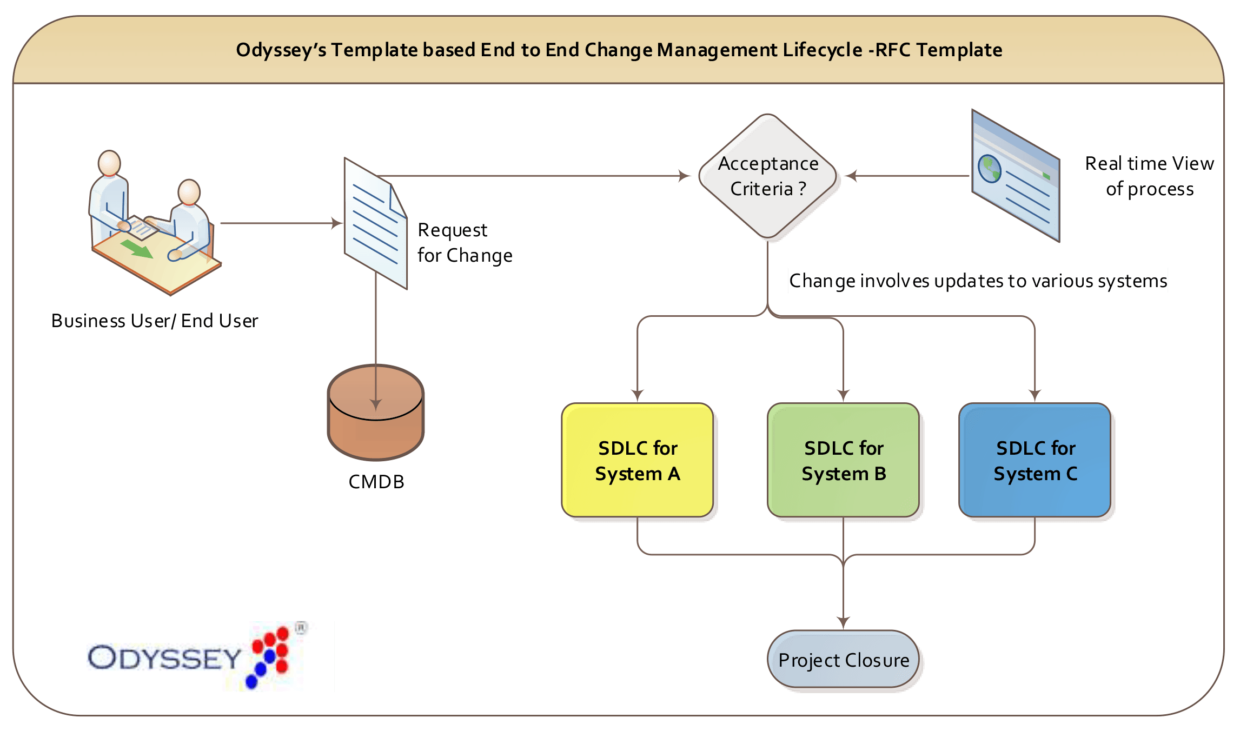ITIL-Based Request-for-Change (RFC) Management
Odyssey Request-for-Change (RFC) Management ensures recording and tracking of requested changes. When a Business Custodian or End User request a change, the change request form mandates they enter all the relevant information and gives them a chance to attach supporting documentation to the request. The project notifies the next parties. Depending on the importance and severity and scope, the Emergency Board or a combination of the Change Management Board and the Change Manager board review the change. The changes are implemented the appropriate IT Departments (complete with any internal processes of code quality, promotion, etc.) and when successfully deployed the RFC is closed.
RFC Lifecycle
Odyssey Request-for-Change Lifecycle for multiple systems gives a framework for tracking an RFC over several SDLCs.
When a Business Custodian or End User request a change, the change request form mandates they enter all the relevant information and gives them a chance to attach supporting documentation to the request. The acceptance criteria can be the same as the Project Management Life Cycle, or other as appropriate to your organization. Once the systems that require changes (or creation) are identified, each system enters its own software development lifecycle. The Project is not closed until all systems are complete. At each and every stage, a high-level view lets managers know where the overall change is in reference to its constituent systems.




